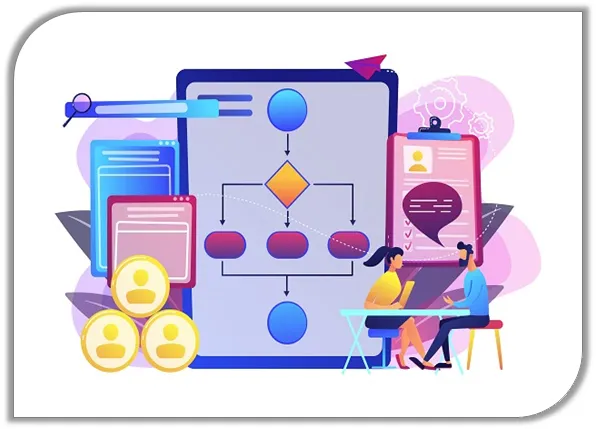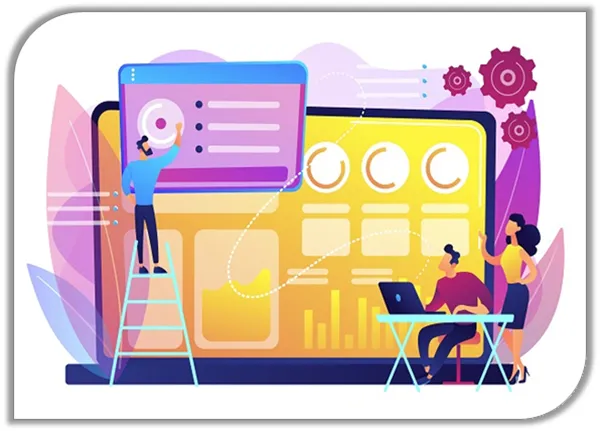
Menu

Menu

Today, there are indeed few relationships in business that are more important than that between the HR and IT teams. Specifically, these two departments must collaborate effectively to ensure that organizational goals align seamlessly. Furthermore, as technology continues to evolve, the integration of HR systems with IT infrastructure becomes increasingly crucial. Consequently, a strong partnership between HR and IT not only enhances efficiency but also drives innovation across the organization. Ultimately, when both teams work together harmoniously, they can create a more agile and responsive business environment.
IT teams have traditionally focused primarily on commercial systems rather than on systems that support internal service functions, such as HR. Moreover, the majority of budget allocations for IT spending have reflected this focus on commercial, customer-facing applications. Consequently, this emphasis often leads to inadequate support for internal teams, including HR, which can hinder overall organizational efficiency. Thus, it is essential for IT teams to also consider investing in systems that enhance internal services and support organizational growth.
Even those companies that invest in internal functions tend to place HR at the bottom of the spending list, specifically below the needs of departments such as finance and procurement. Moreover, this prioritization reflects a common misconception that HR is less critical to organizational success. Consequently, underfunding HR can lead to inadequate support for employees and hinder the overall effectiveness of the organization. Therefore, it is essential for companies to reevaluate their budget allocations and recognize the vital role that HR plays in fostering a productive workplace.
However, things are changing. In fact, there is a growing recognition among business leaders that HR has a pivotal role to play in supporting the organization in achieving business success. Furthermore, as companies increasingly understand the link between effective HR practices and overall performance, they are beginning to prioritize HR initiatives. Consequently, this shift in perception can lead to greater investment in HR resources, ultimately enhancing the organization’s ability to thrive in a competitive environment.

One effective way of building the relationship is to ensure that both parties understand each other’s needs. Specifically, inviting HR to technical planning meetings, as well as inviting IT to HR strategy planning sessions, serves as an excellent place to start. Furthermore, these collaborative efforts not only foster communication but also promote mutual respect and understanding between the teams. As a result, this integration of perspectives can lead to more informed decision-making and better alignment of goals across the organization. Ultimately, creating opportunities for both teams to engage will strengthen their partnership and enhance overall organizational effectiveness.
Where possible, having a dedicated IT resource focused on HR will significantly help to fast-track digitization plans. In addition, this dedicated resource will enable IT to support budget allocation more effectively while also being proactive in sourcing and implementing software that supports HR. Consequently, this focused approach not only streamlines the digitization process but also ensures that HR has the necessary tools to enhance their functions. Ultimately, aligning IT resources with HR needs will lead to more efficient operations and a more productive workforce.
Typical areas where IT needs can have a tremendous impact on HR’s ability to contribute to business success include, for instance, the provision of a core HRMS, a learning management system, and data analysis software. Moreover, implementing these systems not only enhances HR’s operational efficiency but also empowers the department to make data-driven decisions. Consequently, by leveraging technology in these critical areas, HR can better align its strategies with overall business objectives and foster a more engaged and skilled workforce. Ultimately, investing in these IT solutions will enable HR to play a more strategic role within the organization.
A centralized HRMS enables HR to gather employee data and processes into one cohesive system, thereby providing several benefits. Specifically, it offers cost savings, enhances efficiencies in processing administrative tasks, and increases the speed of processing. Furthermore, by consolidating information in a single platform, HR can streamline operations, reduce errors, and improve overall productivity. Consequently, this centralized approach not only simplifies administrative workflows but also allows HR to focus on more strategic initiatives that drive business success. Ultimately, adopting a centralized HRMS is a crucial step toward optimizing HR functions and enhancing organizational effectiveness.
Core HRMS functionality encompasses a range of features that support various critical HR processes. For instance, it includes tools for recruitment, onboarding, compensation and benefits, payroll, time and attendance management, performance management, and off-boarding, among others. Additionally, these functionalities work together to create a seamless experience for both HR professionals and employees. Consequently, having these features integrated within a single system allows HR to operate more efficiently and effectively. Ultimately, a comprehensive HRMS not only simplifies these processes but also contributes to better employee engagement and satisfaction throughout the employment lifecycle.
In-built administrative workflows can significantly simplify and speed up approvals for various processes, including leave requests, benefits, and payroll processing, among other tasks. Furthermore, by automating these workflows, organizations can reduce the time and effort required for manual approvals, thus enhancing overall efficiency. As a result, HR teams can focus more on strategic initiatives rather than getting bogged down by administrative tasks. Ultimately, streamlined workflows lead to faster decision-making and improved employee satisfaction, contributing to a more productive workplace environment.
Providing system access via mobile devices extends the benefits even further, especially when managers can access and approve requests at any time and from any location. Moreover, this flexibility allows for quicker decision-making, as managers are no longer confined to their desks or office hours. Consequently, employees can receive timely responses to their requests, which enhances overall productivity and satisfaction. Additionally, mobile access fosters a culture of responsiveness and agility within the organization, ultimately supporting better communication and collaboration across teams.

Learning management systems (LMS) play a crucial role in supporting and enabling employee development, whether through online, blended, or classroom-based learning. Specifically, these systems can provide personalized learning paths that cater to individual needs while also offering access to a library of both internal and external resources for self-development. Furthermore, LMS can link to critical employee functions such as performance management, succession planning, and leadership development, creating a cohesive development ecosystem. Additionally, many LMS platforms include social learning features, which foster collaboration and knowledge sharing among employees. Moreover, with the availability of these systems on mobile devices, employees can enjoy anytime, anywhere access to valuable learning opportunities, ultimately enhancing their professional growth and engagement within the organization.
Employee information held online forms a vast reservoir of organizational data that can prove invaluable in a variety of ways. For instance, this data can provide evidence that an organization is meeting all labor and employee-related legislation, thereby ensuring compliance and minimizing legal risks. Additionally, it can assist with alerts and reminders for essential tasks, such as document renewals, which helps to maintain organizational efficiency. Furthermore, having access to this information can enable HR teams to make data-driven decisions, ultimately contributing to better workforce management. In this way, effectively utilizing online employee data not only streamlines administrative processes but also enhances overall organizational performance.

IT can develop standard reports that can be run on-demand or even scheduled for delivery directly to executive mailboxes, ensuring that leaders have timely access to critical information. Moreover, IT can create online dashboards that are updated in real-time, providing visual snapshots of employee-related information that directly drives business goals. Consequently, these dashboards allow executives to quickly assess performance metrics and make informed decisions based on the most current data available. Additionally, by centralizing this information, organizations can enhance transparency and collaboration across departments. Ultimately, leveraging IT to deliver both reports and dashboards empowers leadership to stay aligned with organizational objectives and respond proactively to emerging trends.
When HR and IT partner together, the whole organisation benefits.
Alignment
Article
Audit
Automation
Benefits
Candidate
Communication
Compliance
Digitalisation
Digital Technology
Diversity
Emirates Id Application
Employee Experience
ESS
Feedback
Health and Safety
HRMS
HR Strategy
HR System UAE
Human Resource Management
Human Resource Management Systems
Job Roles
Learning and Development
Onboarding
Outsource
Payroll
Payroll Management System
Payroll Processing
Performance
Performance Management
Personalisation
Recruit
Recruiting
Recruitment
Remote Working
Rewards
Security
Service Providers
Skills
Smart
Survey
Virtual
Visa Cancellation
Work Environment
Workforce
© 2025 Pruvity HR Solutions Pvt Ltd, Madurai, India